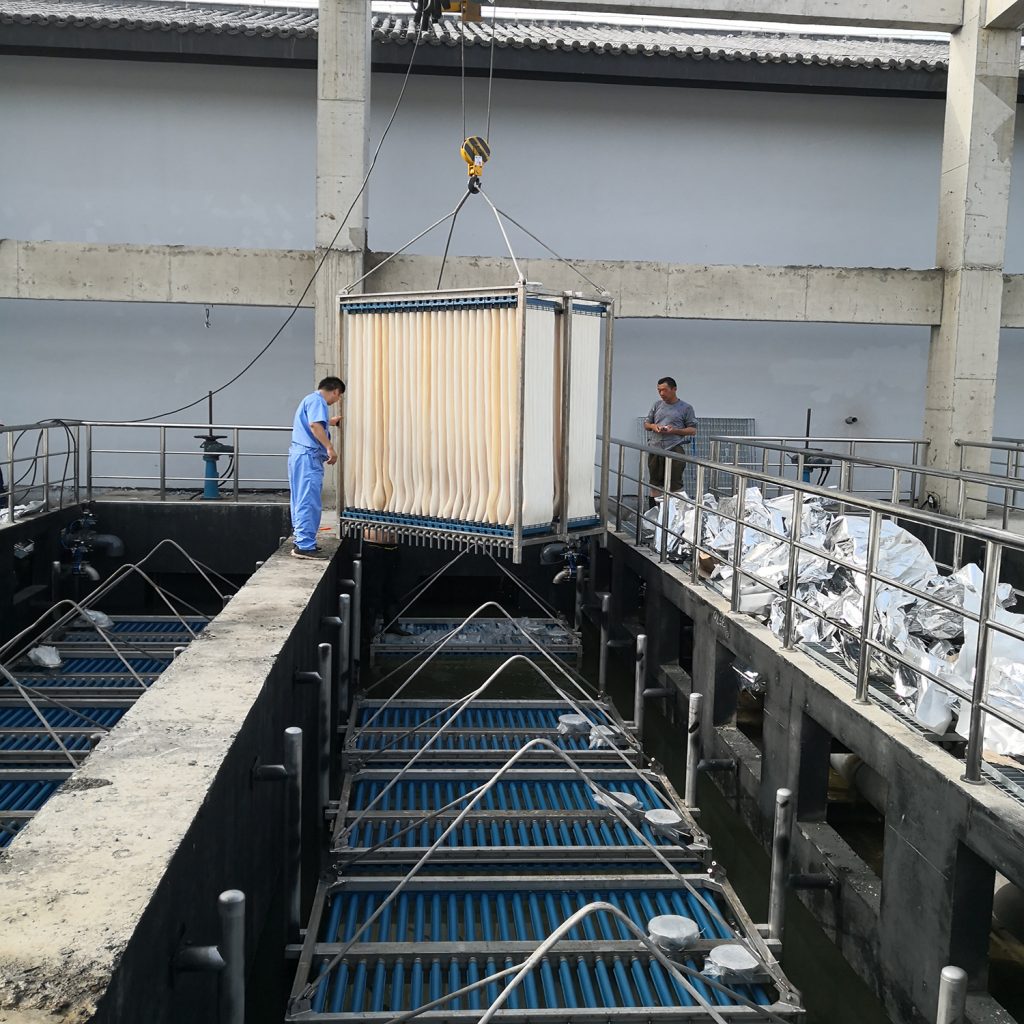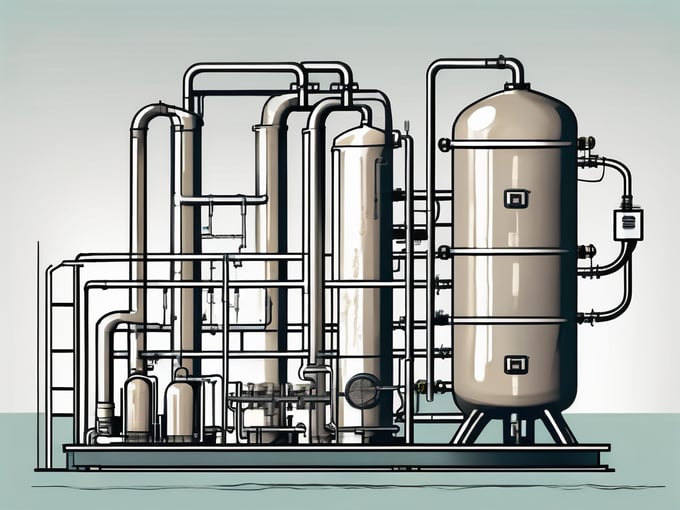Why Membrane Bioreactor is the Future of Wastewater Treatment in Industries
Why Membrane Bioreactor is the Future of Wastewater Treatment in Industries
Blog Article
Comprehending Membrane Layer Bioreactors: The Future of Wastewater Treatment
Membrane bioreactors (MBRs) stand for a notable innovation in the area of wastewater treatment, incorporating biological processes with innovative membrane filtration to boost effluent high quality. As international water shortage and strict governing frameworks come to be progressively pressing concerns, MBR technology supplies an efficient feedback with its ability to lessen footprint and enhance resource recuperation. Nonetheless, the fostering of MBRs is not without its challenges, which merit careful consideration. What are the vital elements affecting their implementation and lasting viability in different contexts? The solutions might reshape our strategy to wastewater management.
What Are Membrane Layer Bioreactors?

The core components of MBR systems consist of a bioreactor where microbial activity happens and a membrane device that filters the mixed liquor. This dual functionality enables the simultaneous degradation of organic issue and solid-liquid splitting up in a solitary action. MBRs can run in both immersed and outside setups, with submerged systems being much more common due to their compact design and functional performance.
The fostering of MBR modern technology has actually gotten traction in various applications, ranging from metropolitan wastewater therapy to commercial effluent administration. MBRs are particularly advantageous in circumstances where room is strict or limited effluent top quality criteria need to be met. By maintaining a high concentration of bacteria within the bioreactor, MBRs improve the degradation of natural contaminants, thus yielding greater treatment performances contrasted to conventional approaches.
Secret Advantages of MBR Innovation
The assimilation of biological therapy with membrane filtering in MBR systems offers many advantages that establish it aside from typical wastewater treatment approaches. One of the main advantages is the enhanced effluent top quality. MBRs effectively eliminate put on hold solids and microorganisms, achieving higher degrees of filtration that meet rigid discharge criteria and help with water reuse applications.

Another significant advantage is the lowered sludge manufacturing. MBR systems produce much less excess sludge, leading to lower disposal expenses and a reduction in ecological influence. The shut nature of the membrane system reduces the danger of odor emissions and improves general procedure control.
Last But Not Least, MBRs are adaptable and versatile, making them suitable for various wastewater types, including commercial and municipal resources. The ability to incorporate with advanced therapy modern technologies further enhances their effectiveness, making MBRs a promising solution for the future of wastewater management.
Challenges and Limitations of MBRs
While MBR modern technology supplies numerous benefits, it additionally encounters numerous difficulties and restrictions that can affect its widespread adoption. One substantial obstacle is the high funding and operational costs related to MBR systems. The first financial investment for membrane layer materials and the necessary framework can be significant, making it less available for smaller districts or sectors.
In addition, membrane layer fouling stays a crucial issue that can diminish system efficiency and boost maintenance needs. Fouling happens when solids, organic issue, or bacteria accumulate on the membrane layer surface, bring about minimized permeability and calling for regular cleansing or replacement.
One more constraint involves the complexity of the technology. MBR systems need knowledgeable personnel for operation and maintenance, which can be a barrier in regions with restricted technical experience. The disposal of invested membrane layers presents ecological concerns, as the materials are usually not biodegradable and can add to throw away management difficulties.
Last But Not Least, while MBRs can efficiently deal with a large range of wastewater, they might not be appropriate for all applications, specifically those with high concentrations of fats, oils, and greases, requiring more research and development to attend to these constraints.
Applications of Membrane Bioreactors
In various industries, membrane layer bioreactors (MBRs) have actually become a versatile solution for wastewater treatment (Membrane Bioreactor). Their applications cover local, commercial, and farming setups, showcasing their adaptability and effectiveness in diverse atmospheres. In local wastewater therapy plants, MBRs dramatically boost effluent quality, permitting water reuse and reducing the environmental impact of discharged wastewater
Industrially, MBRs are employed in food and beverage processing, textile manufacturing, and pharmaceutical production, where they effectively treat high-strength waste streams. Their capability to handle differing and rising and fall lots impurity focus makes them especially important in these industries. In addition, MBRs help with the removal of pathogens, put on hold solids, and raw material, adding to compliance with stringent discharge regulations.
In farming, MBRs are significantly utilized for treating agricultural drainage and animals wastewater, allowing the recovery of nutrients for plant food manufacturing. They also aid in the therapy of greywater for irrigation, promoting lasting water administration practices.
The versatility of MBRs is more confirmed by their integration with various other innovations, such as anaerobic digestion and progressed oxidation procedures, enhancing general performance and resource healing in wastewater therapy systems.
The Future of Wastewater Therapy
Advancements in innovation and an expanding focus on sustainability are shaping the future of wastewater therapy. Membrane bioreactors (MBRs) exhibit this shift by incorporating biological therapy processes with membrane layer filtering, causing top notch effluent suitable for reuse. The fad towards round economic climates is motivating facilities to take on MBRs for their capability to recoup Find Out More resources, such as water and nutrients, from wastewater.
Technologies in membrane products and configuration are improving the performance and durability of MBR systems, decreasing functional costs and power intake. Smart technology assimilation, including real-time monitoring and automated control systems, is further enhancing efficiency and allowing anticipating upkeep, thus lessening downtime.
Moreover, regulative stress and social expectations are pushing communities and sectors to embrace even more lasting practices. Membrane Bioreactor. The shift towards decentralized wastewater treatment options is obtaining traction, allowing for local treatment that decreases transportation expenses and power usage
Verdict
Membrane layer bioreactors (MBRs) stand for a transformative approach to wastewater treatment, integrating biological processes with advanced membrane innovation. The advantages of MBRs, including improved effluent high quality, decreased spatial demands, and lower sludge production, position them as a practical service amidst growing urbanization and stricter environmental policies. Despite existing challenges, the continued innovation in membrane layer products and functional approaches assures to boost the effectiveness and adoption of MBRs, ensuring their pivotal role in the future of lasting wastewater monitoring.
Membrane layer bioreactors (MBRs) represent a noteworthy innovation in the area of wastewater therapy, integrating biological procedures with sophisticated membrane filtration to boost effluent top quality.Membrane bioreactors (MBRs) combine organic therapy processes with membrane layer purification to successfully treat wastewater.The assimilation of organic treatment with membrane layer filtering in MBR systems provides numerous benefits that helpful resources set it apart from traditional wastewater therapy methods. Membrane layer bioreactors (MBRs) exemplify this shift by incorporating biological therapy processes with membrane layer filtering, resulting in top quality effluent ideal for reuse.Membrane bioreactors (MBRs) stand for a transformative technique to wastewater Homepage treatment, incorporating biological procedures with advanced membrane layer technology.
Report this page